The Black Obelisk of Shalmaneser III is a black limestone Assyrian statue with many scenes in bas-relief and inscriptions. It is the most complete Assyrian obelisk yet unearthed and is historically meaningful because it represents the earliest ancient depiction of a biblical figure – Jehu, King of Israel.
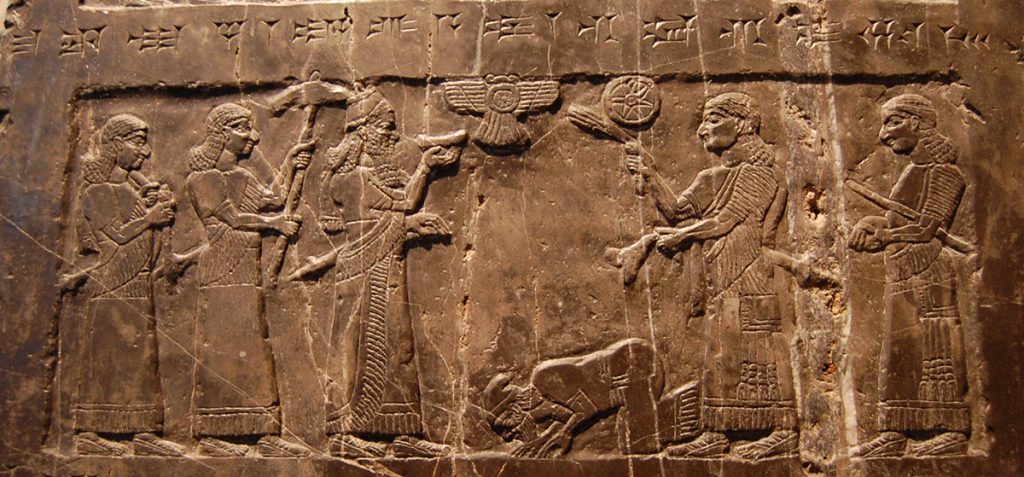
Credit: GFDL (CC BY-SA 3.0)
In The Beginning
So our story begins with Sir Austen Henry Layard that was an English traveler and archaeologist. Chiefly known as the excavator of Nimrud and of Nineveh. He uncovered a large proportion of the Assyrian palace reliefs and, in 1851, the library of Ashurbanipal. Layard did not really mean to undertake excavations in Mesopotamia, at the least not at first.
In 1839 at the age of 22, he traveled with a friend to Sri Lanka from England.
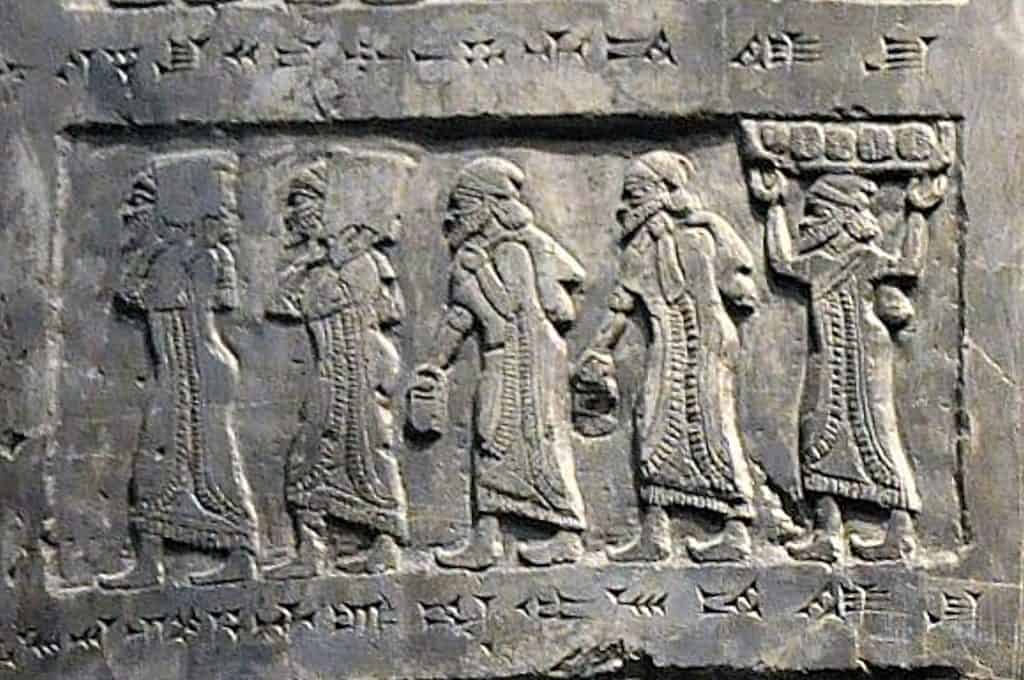
Credit: Osama Shukir Muhammed Amin FRCP(Glasg) (CC BY-SA 4.0)
They had gone through Turkey and visited Jerusalem, Petra, and other ancient cities. When they finally reached Musol in may of 1840, the archaeology bug bit him. Although only in 1845 Layard is officially beginning to excavate. They were at the site of Nimrud, which he first thought was ancient Nineveh.
Great Discoveries On the Very First Day
Before the first day even ended, he found rooms with walls covered with carved inscriptions. As it turned out, the room belonged to different palaces. From the inscription, Layard found it was clear that a few of the structures and the monuments at the site belonged to Shalmaneser III, who ruled from 858 to 824 BCE. Layard published a book giving it the title ‘Nineveh And Its Remains’ since that’s what he thought he was excavating.
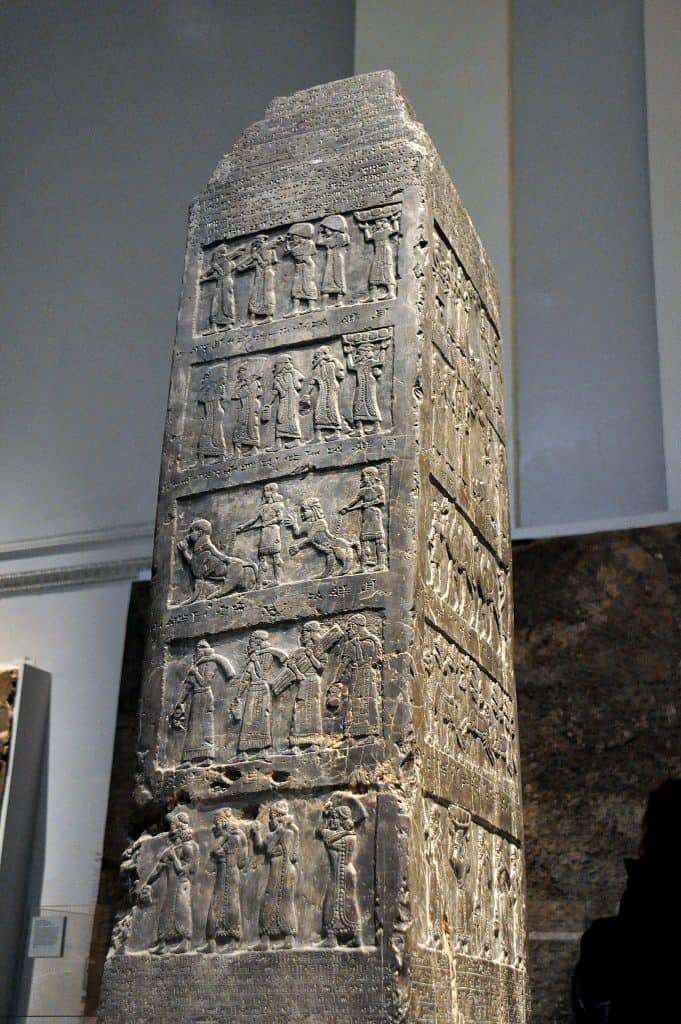
Credit: Osama Shukir Muhammed Amin FRCP (CC BY-SA 4.0)
However, this had turned out to be an unfortunate choice for the title when the inscriptions from the site were finally deciphered. They confirmed that the site is ancient Kalhu, biblical Calah rather than Nineveh. The book is about his amazing discoveries at Nimrud, including the black obelisk of Shalmaneser III that mentions Jehu, the King of Israel. And this is what he wrote about the moment of discovery:
“An Arab was sent after me without delay, to announce the discovery; and on my return, I found, completely exposed to view, and laying on its side an obelisk, about six feet six inches in height, terminated by three steps or gardens and flat at the top. I descended eagerly into the trench and was immediately struck by the remarkable monument’s singular appearance and evident antiquity before me. We raised it and speedily dragged it out of the ruins.”
A Popular Account of Discoveries at Nineveh, Austen Henry Layard.
What Is So Unique About The Black Obelisk?
It features twenty relief scenes, five on each side. They depict five different subdued kings bringing tribute and prostrating before the Assyrian king. One of those kings is Jehu of the House of Omri. The inscription that appears in the second register from the top is thought to include the earliest surviving picture of a biblical figure. The inscription read:
“The tribute of Jehu, Son of Omri: I received from him silver, gold, a golden bowl, a golden vase with pointed bottom, golden tumblers, golden buckets, tin, a staff for a king [and] spears.”
The inscription identifies Jehu as the king who is bowing down and paying tribute, and it identifies Jehu as a successor of Omri, the father of the northern Kingdom of Israel (1 Kings 16; 2 Kings 9-10). This inscription confirms the existence of two biblical kings of Israel.
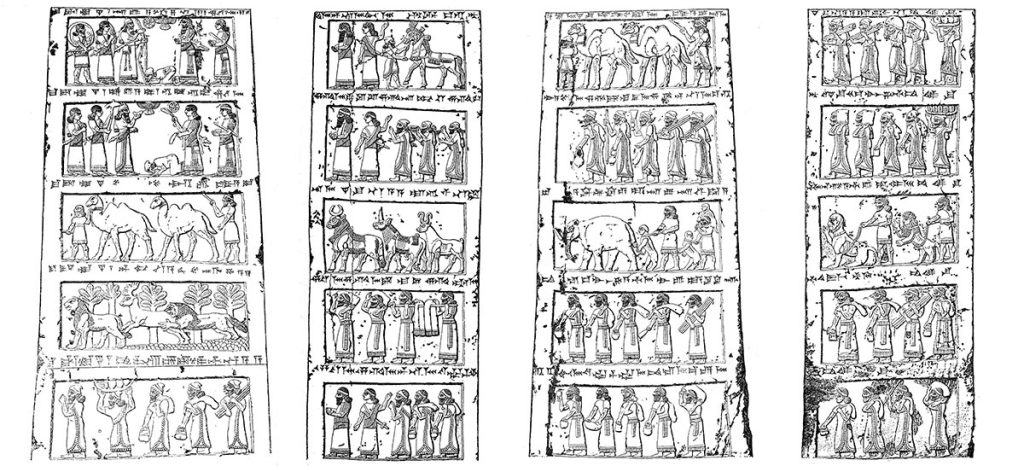
The Black Obelisk of Shalmaneser III: Text and Context
The stele describes how Jehu brought or sent his tribute in or around 841 BCE. Jehu severed Israel’s alliances with Phoenicia and Judah and became subject to Assyria. So the context of Jehu’s submission was just after Shalmaneser defeated Hazael, the king of Syria (2 Kings 8:7-15).
Then the Bible goes on saying:
“In those days the Lord began to reduce Israel; and Hazael harassed them throughout the territory of Israel” .
2 Kings 10:32
So during the reign of Jehu, Syrian King Hazael was harassing Israel and attacking its land. The time frame lines up perfectly with the biblical account.
Verse 31 reveals why these attacks were coming upon Israel:
“But Jehu was not careful to follow the teaching of the Lord, the God of Israel, with all his heart; he did not turn away from the sins that Jeroboam had caused Israel to commit”
So Jehu didn’t break away from the sins of Jeroboam. Absolutely! he did magnificent work by eliminating Baal idol worship from Israel. However, he decided to keep the two golden calves (One placed in Dan and in Ancient Bethel. Spite the fact they were still worshiping the same God, Yahweh, they were not worshiping Him in the way He instructed.
Tel Dan Nature Reserve
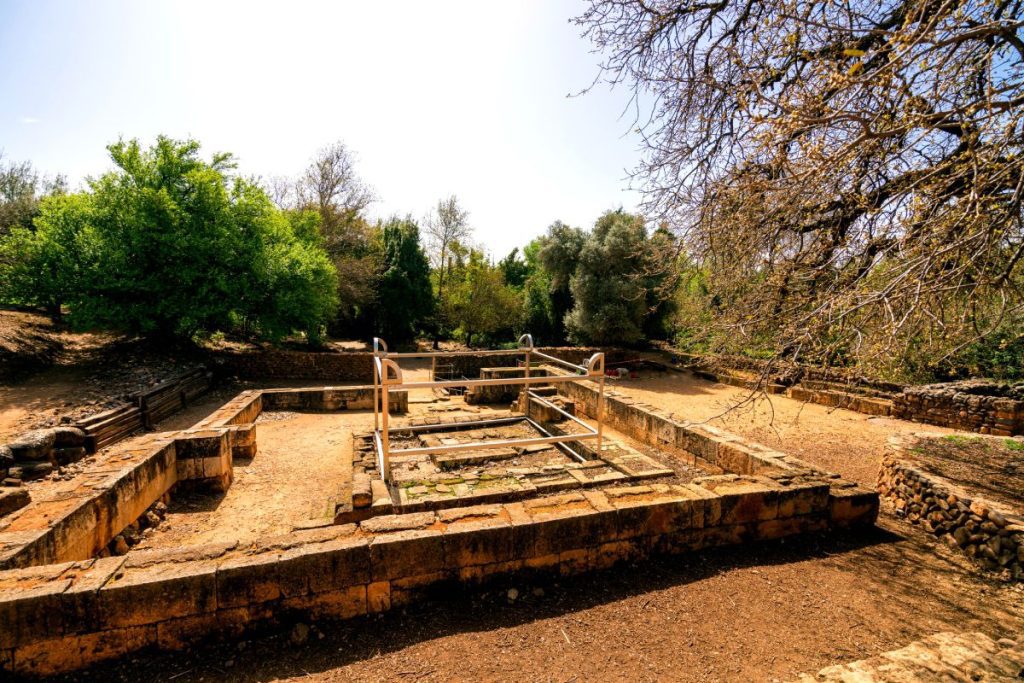
Because of this sin, God used Hazael and Shalmaneser to reprimand Israel. Jehu accomplished to pay off the Assyrians, as did the heir to the throne, Jehoash, and many other Israelite kings. However, the events that followed were inevitable. It was just a matter of time until Israel fell into Assyrian captivity. Between 721 and 718 BCE., the Assyrians were able to subdue the kingdom of Israel and drove them to captivity. From that point and on, Israel appears to have vanished from history.
The Black Obelisk of Shalmaneser III: Ending Notes
The Black Obelisk was indeed a fantastic find. It describes all the military campaigns Shalmaneser III conducted. And because it is written in cuneiform, deciphering the inscription was one of the first steps for decoding the Assyrian language. Moreover, the obelisk mentions events that had a significant impact on the Geopolitical situation in the Fertile Crescent at the time. For example, the Battle of Qarqar. About this battle, I have a separate post that you’re more than welcome to read about.







